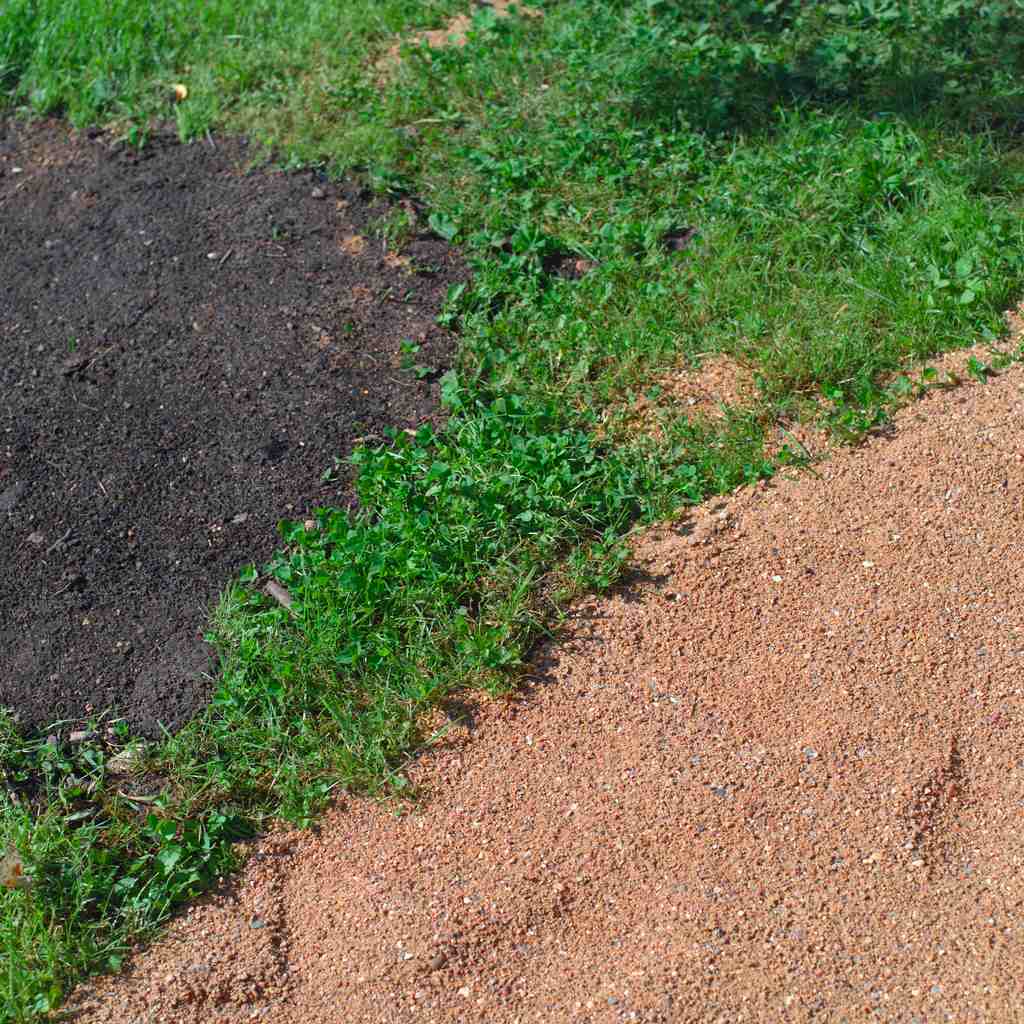When it comes to sand for lawns, there are a lot of different options to choose from. You might be wondering what the best type of sand is for your yard. In this blog post, we will discuss the different types of sand and what each one is best used for. We will also provide tips on how to choose the right type of sand for your lawn!

Best Type of Sand for Lawns?
Sand is a versatile material that can be used in a variety of landscaping applications. It can be used to create pathways, fill in spaces between pavers, and provide drainage in areas where the soil is too compacted. It can also be used to improve the drainage of lawns. Lawns require a well-drained soil in order to stay healthy and free of disease. If the soil is too compacted or clay-like, it will not drain properly, and the roots of the grass will suffocate.
Adding sand to the soil will help to improve its drainage and aeration. The best type of sand to use for lawns is coarse-grained sand, such as playground sand or builder’s sand. Avoid using fine-grained sand, as it can clog the pores of the soil and prevent water from draining properly.
What is the best soil for a lawn?
While there are many types of sand, not all of them are created equal when it comes to lawns. The best type of sand for lawns is called silica sand, which is a form of quartz that is durable and has a uniform particle size. This type of sand is often used in golf courses and other areas where a high-quality lawn is desired. In contrast, regular beach sand is often too coarse and contains too many impurities to be used on lawns. As a result, it is important to choose the right type of sand when creating or maintaining a healthy lawn. Silica sand can help to create a beautiful and long-lasting lawn that will be the envy of the neighborhood.
When is the best time to put sand on your grass?
When it comes to your lawn, a little bit of sand can go a long way. Sand helps to aerate the soil and improve drainage, both of which are important for a healthy lawn. When adding sand to your lawn, it’s important to do it at the right time of year. Fall is the best time to add sand, as it gives the grass time to recover before the winter weather sets in. You’ll also want to be careful not to add too much sand, as this can damage the grass. When in doubt, it’s always best to consult with a professional gardener or landscaper. With a little bit of care, you can keep your lawn looking green and healthy all year long.
Also Read: What to Do If Your Lawn Is Always Dry: Effective watering tips
Can sand be beneficial for lawns?
There are many ways one can use sand; it all depends on your imagination. In the garden, sand can be used to improve drainage, help control weeds, and even create artistic designs. However, one common question is whether or not sand is good for lawns. The answer is yes and no. While sand can help to improve drainage and prevent compaction, it can also make it difficult for grass to take root. As a result, it’s important to use sand judiciously when caring for a lawn. In most cases, a thin layer of sand is all that’s needed to provide the benefits without causing harm.
Should I add sand to my lawn?
Many people believe that sand is helpful for lawns because it improves drainage. While this is true to some extent, there are also several drawbacks to consider before spreading sand on your lawn. First of all, sand can damage the blades of grass, making them more susceptible to disease and pests. In addition, sand can clog up the thatch layer, which is vital for healthy Lawns.
Too much sand can also make it difficult for roots to take hold, leading to a patchy lawn. Ultimately, whether or not you put sand on your lawn depends on your specific circumstances. If you have a problem with poor drainage, sandy soil, or compacted soil, then spreading a thin layer of sand may be helpful. However, if your lawn is generally healthy, it’s best to leave it as is.
Top Dressing your Lawn with Sand
Top dressing your lawn with sand is an effective way to level out your lawn and improve its drainage. Top dressing is the process of applying a thin layer of material over the surface of the soil. Sand is a good top-dressing choice because it is relatively inexpensive and easy to spread. Top dressing with sand can also help to fill in small divots and craters, creating a smoother overall surface. Although it is possible to do this yourself, it is often best to hire a professional Lawn Care Service to ensure that the job is done correctly. Top dressing your lawn with sand is an effective way to improve its overall health and appearance.
Reasons for Top Dressing your Lawn with Sand
Reasons for Top Dressing your Lawn with Sand are vast, but the primary goal is to level the lawn. A level lawn is easier to mow and there are fewer chances of injuring yourself while mowing. If you live in an area that gets a lot of rain, the sand will help to improve drainage. Excess water on your lawn can damage the grass and make it more susceptible to disease. The sand will also help to fill in any low spots on your lawn caused by dog traffic or wear and tear.
In addition, top dressing with sand gives your lawn a nice, clean look. Finally, if you plan on overseeding your lawn, top dressing with sand will give the new grass seed something to cling to as it starts to grow. All of these reasons make top dressing with sand an essential part of lawn care.
